Types, Patterns and Outcomes of Personal Watercraft-Related Trauma
- *Corresponding Author:
- Ayman El-Menyar
Clinical Research, Trauma & vascular Surgery, Hamad General Hospital, Po Box 3050, Doha, Qatar
Tel: +97444396152.
E-mail: aymanco65@yahoo.com
This is an open access article distributed under the terms of the Creative Commons Attribution-NonCommercial-ShareAlike 3.0 License, which allows others to remix, tweak, and build upon the work non-commercially, as long as the author is credited and the new creations are licensed under the identical terms.
Abstract
Background: Personal watercraft (PWC) - related injuries have increased significantly as well as its popularity. Aim: We aimed to describe types, patterns and outcomes of PWC injuries in Qatar. Subjects and Methods: A retrospective analysis was conducted to identify patients admitted and treated for PWC-related injuries between 2008 and 2014. Data included patients demographics, mechanism of injury, Glasgow coma scale, injury severity scoring, Abbreviated Injury Score, location of injuries, hospital length of stay, ventilator days and mortality. Data were analyzed by the type of PWC (Jet Ski and motorboat). Results: A total of 39 patients were identified with PWC-related injuries. The majority of cases (71.8%, 28/39) were young and aged 21 to 40 years. Twenty-six cases were injured in Jet Ski accidents and 13 sustained motorboat-related injuries. Patients injured in Jet Ski accidents were younger than those involved in motorboat accidents (mean age (SD); 25(7.6) vs 32.6(6), p=0.01). Chest injury was the most common type of injury; however, the severity of injury was highest in head trauma as compared with other body regions. The injured anatomical regions, severity of injury and outcomes were comparable in the Jet Ski and motorboat-related injuries. Two fatalities were reported; one in Jet Ski-related accident which occurred due to severe head injury and the other patient died due to drowning following motorboat accident. The small sample size in this cohort is one of the limitations, however, given the small number of Qatar population, rarity of reported PWC-related injuries and the importance of paying attention of healthcare authorities for this mechanism of injury may counteract this limitation. Conclusion: PWC-related injuries are increasing and possess potential risk of severe injuries and disabilities among young population. Strict regulation for training and operation of PWC together with public awareness is needed to improve the safety of recreational injuries.
Keywords
Personal watercraft, Jet Ski, Motorboat, Sport, Injury pattern, Outcome
Introduction
The incidence of personal watercraft (PWC)-related injuries have increased substantially recently along with its popularity as a recreational water sport.[1,2] PWCs are typically referred as Jet Ski or motorboat which are usually operated by young adults in an unconventional manner.[3] In 2013, there were 4,062 recreational boating accidents reported in the United States which resulted in 2,620 injuries, 560 deaths and a financial loss of around $39 million dollars.[1] Among fatalities, drowning (77%) of victims was the most common cause of death. An earlier retrospective study reported 66 pediatric trauma caused by PWC.[4] The most frequent injury mechanism was collision (70%) in terms of boat to boat or boat to a fixed object. Around 55 % of victims sustained injuries to head, face, or neck regions. PWC accidents may also occur due to ejection from the watercrafts, handlebar straddle injuries, or confrontation with a hydrostatic jet stream.[5] A recent study analyzed watercraft injuries among children (7-15 years old) observed sharp trauma inflicted by propeller and towed tubing to be the common mechanisms of injury.[6]
There is a paucity of information on the frequency and presentation of PWC-related injuries from the high-income Middle-Eastern countries. Our previous study on recreational injuries identified water sports to be the primary cause of recreation-related traumatic head injuries in Qatar among young population.[7] Herein, we report the frequency of PWC-related accidents and describe types, patterns and management of PWC-related injuries in Qatar.
Methods
An observational retrospective analysis was conducted to identify all patients admitted and treated for PWC-related injuries at a level 1 trauma center in Qatar, between January 2008 and December 2014. PWCs are defined as motorboats less than 16 feet in length that are powered by jet pumps, not propellers, where the persons stand, kneel, or sit on, rather than inside the boat.[3] Data included demographics, mechanism of injury (MOI), mode of transportation, emergency medical services (EMS) time, Glasgow coma scale (GCS), Injury Severity Scoring (ISS), Abbreviated Injury Score (AIS), location of injuries, intensive care and hospital length of stay, ventilator days and mortality. Data were also analyzed by the type of PWC i.e. Jet Ski or motorboat. This study has been approved by the Institutional Review Board at Hamad Medical Corporation, Qatar (IRB # 15083/15). As data were collected retrospectively without direct contact with patients, a waiver of consent was granted. All data were kept anonymously.
Statistical analysis
Data were presented as proportions, mean [standard deviation (SD)] or median as appropriate. Baseline demographic characteristics, mode of transport, injured body region, injury severity and outcomes were compared according to the type of PWC. Pearson chi-square (X2) test and Yates’ corrected chi-square was used for categorical variables and student-t test was used for continuous variables. The Fisher’s exact test was used, if the expected cell frequencies were below 5. For skewed continuous data non-parametric Mann-Whitney test was performed. A significant difference was considered when the 2-tailed p value was less than 0.05. Data analysis was carried out using the Statistical Package for Social Sciences version 21 (SPSS Inc. USA).
Results
During a 7- year study period, there were 39 patients (35 males and 4 females) admitted to the level 1 trauma center with PWCrelated traumatic injuries. The mean (SD) age of patients was 27.6(9.3) years, 38.5% (15/39) were Qataris. The majority of victims were involved in Jet Ski accidents (66.7%, 26/39) followed by motorboat (33.3%, 13/39) accidents [Table 1]. Victims of PWC-related accidents were mainly young adults (71.8%, 28/39) aged between 21 to 40 years [Figure 1]. In the age group 21-30 years, 61.1% (11/18) patients were injured by Jet Ski and 38.9 % (7/39) by motorboats accidents. The most frequent mode of transportation from the scene to trauma center was ground ambulance (84.6%, 33/39) and the mean (SD) EMS time was 55.7(26.3) minutes. Chest injury (41.0%, 16/39) was the most common type of injury; followed by superficial skin injury (30.7 %, 12/39), lower limb (25.6%, 10/39), abdomen (25.6%, 10/39) and head (23.0%, 9/39) injuries [Figure 2]. The mean (SD) injury severity score was 11.2(7.8) and on-scene GCS was 14.4(2.4). Head region had high mean (SD) AIS [3.1(0.9)] [Figure 3]. Table 2 shows the patients demographics, anatomical regions involved, injury severity and outcome by type of PCW. Patients injured in Jet Ski-related accidents were 7 years younger than those who were involved in motor-boat accidents [25.0(7.6) vs. 32.6(10.8) years; p=0.01). There were no significant differences in injured anatomical regions, severity, or outcomes between Jet Ski and motorboat-related injuries. However, the head region had more severe injuries than other types of injuries. The median (range) length of ventilator days, hospital and ICU stay were 1 (1-13), 4 (1-40) and 2 (1-19) days, respectively. Two mortalities were reported; one in motorboat and the other in Jet Ski accidents. Jet Ski-related mortality was due to head injury and the other was due to drowning.
| Variables | Value |
|---|---|
| Age* | 27.6 (9.3) |
| Males (n, %) | 35 (89.7%) |
| Nationality (n,%) | |
| Non-Qatari | 24 (61.5%) |
| Qatari | 15 (38.5%) |
| Type of watercraft (n,%) | |
| Jet Ski | 26 (66.7%) |
| Motorboat | 13 (33.3%) |
| Mode of transport to trauma center (n,%) | |
| Ground Ambulance | 33 (84.6%) |
| Life flight | 2 (5.1%) |
| Private car | 4 (10.3%) |
| EMS time* | 55.7 (26.3) |
| Glasgow Coma Score (GCS)* | |
| On-Scene | 14.4 (2.4) |
| On-admission | 13.9 (3.3) |
| After 1 hour post admission | 14.1 (2.9) |
| Injury severity score* | 11.2 (7.8) |
| Hospital LOS † | 4 (1-40) |
| ICU LOS† | 2 (1-19) |
| Ventilator days† | 1 (1-13) |
| Mortality (n,%) | 2 (5.1%) |
*Mean (SD) or † median (range) used whenever appropriate
Table 1: Demographics, injury characteristics and outcome of Personal Watercraft (PWC)-related injuries in Qatar (2008- 2014).
| Variables | Boat (n=13) | Jet Ski (n=26) | P value |
|---|---|---|---|
| Age* | 32.6 (10.8) | 25.0 (7.6) | 0.01 |
| Males (%) | 92.3 | 88.5 | 0.70 |
| Nationality (%) | |||
| Non-Qatari | 69.2 | 57.7 | 0.72 |
| Qatari | 30.8 | 42.3 | 0.72 |
| Mode of transport (%) | |||
| Ground Ambulance | 84.6 | 84.6 | 0.30 |
| Life flight | 15.4 | 0.0 | 0.30 |
| Private car | 0.0 | 15.4 | 0.30 |
| EMS time* (minutes) | 77.5 (3.5) | 51.3 (26.8) | 0.21 |
| Injured anatomical regions (%) | |||
| Head | 30.8 | 19.2 | 0.68 |
| Chest | 46.2 | 38.5 | 0.73 |
| Abdomen | 23.1 | 26.9 | 0.79 |
| Upper extremity | 23.1 | 7.7 | 0.39 |
| Lower extremity | 15.4 | 30.8 | 0.51 |
| Pelvis | 7.7 | 11.5 | 0.85 |
| Spine | 15.4 | 7.7 | 0.85 |
| Superficial | 38.5 | 26.9 | 0.71 |
| Head AIS* | 2.8 (0.9) | 3.4 (0.9) | 0.32 |
| Chest AIS* | 2.5 (0.5) | 2.8 (0.4) | 0.23 |
| Abdomen AIS* | 2.3 (0.6) | 2.7 (1.1) | 0.59 |
| Upper extremity AIS* | 2 (2-2) | 2 (2-2) | 0.80 |
| Lower extremity AIS* | 2.5 (0.7) | 2.9 (0.3) | 0.28 |
| Pelvis AIS† | 3 (3-3) | 3 (2-3) | 1.0 |
| Spine AIS† | 2 (2-2) | 2 (2-2) | 1.0 |
| External AIS† | 1 (1-1) | 1 (1-1) | 1.0 |
| GCS Scene* | 14.8 (0.3) | 14.2 (2.9) | 0.58 |
| Injury severity score* | 10.5 (8.0) | 11.5 (7.7) | 0.71 |
| Hospital LOS† days | 3 (1-40) | 5 (1-19) | 0.05 |
| ICU LOS† days | 1 (1-19) | 2.5 (2-4) | 0.54 |
| Ventilatory days† | 1 (1-13) | 1 (1-1) | 1.0 |
| Mortality (%) | 7.7 | 3.8 | 0.79 |
*Mean (SD) or † median (ra
Table 2: Comparison of patient and injury characteristics, and outcomes by type of Personal Watercraft (used in Qatar (2008- 2014).
Discussion
Recently, personal watercraft (PWC) use has significantly increased along with rising of the popularity of water sports and development of tourism sector in the state Qatar. Availability of calm and warm water and large coastlines also render this watersport more favorable for recreational activities in the country. The state of Qatar is a peninsula with an approximately 563 km coastline [Figure 4] within the Arab Gulf with around 2.2 million inhabitants (70% are of age between 24 and 54 years old), therefore water sports become popular to youth.
With the increase in the frequency of PWC-related accidents, more information becomes more available on the mechanisms of injury, incidence and pattern of associated injuries. It has been reported that more serious injuries are sustained by PWC accidents in comparison to accidents involving other small boats.[8] Depending upon the injury mechanism, PWCrelated injuries might differ in severity and presentation.[9] It usually includes closed head and facial injuries, abdominal injuries, thoracic and spinal trauma which could be fatal. [8] The underlying contributing factors for these injuries are inexperience or inattention of the operator, over speeding, improper observation and alcohol abuse.[10] The consequence of such negligence might result in severe injuries, long-term disability and death as reported in various studies. However, the exact incidence of PWC-related injuries remains unidentified due to under-reporting of these a12ccidents.[11]
The increasing trend for the use of PWCs is associated with the higher incidence of crashes and physical injuries. However, the true incidence of PWC accidents remains under reported in the Arab gulf region. The present study reviewed our experience with traumatic injuries resulting from watercraft accidents in Qatar. In our series, the majority of victims were young males (mean age of 27.6 years) and 38% were Qataris nationals. Consistent with our findings, Garri et al.[12] reported the involvement of young male with an average age of 29 years (range, 8 to 64 years) sustained maxillofacial injuries secondary to powered watercraft collisions. Whereas, Kim et al. [2] observed a mean age of 23 years in patients with PWC injuries which is relatively younger as compared to earlier studies. Other studies have focused on pediatric population which showed significant mortalities and disabilities as a consequence of PWC injury.[4,6] An earlier study on pediatric PWC injuries reported that nearly 56% of the injuries were caused by Jet Ski. [13] These data suggested that children, adolescents and young adults are at increased risk for severe PWC-related injuries. This could be more likely related to lack of experience, inadequate supervision, and/or risk-taking behavior.[14] In our study, Jet Ski (66.7%) injuries were more frequent than other watercraft associated injuries. Beierle et al.[13] reported 16 children with PWC-related injuries; of which 9 (56%) had Jet Ski accidents and 7 (44%) involved in other watercrafts.
Injuries resulting from collisions are most commonly observed in PWC-related accidents. Seventy percent of injuries reported by Rubin et al. were due to collisions with other objects which mainly occurred due to carelessness and inattention. Collisions often results in significant blunt trauma to various body regions as head, face, neck, chest, and extremities.[8] Kim et al.[2] reported that 27% patients with PWC accidents sustained chest injuries and 13% had closed head injuries. Moreover, 56% of the accidents involved collision with another PWC.
Contrarily, head and neck injury was the frequent cause of traumatic injury in PWC accidents as reported by Garri et al.[12] Haan et al.[5] reported traumatic brain injury in 54% of PWC injured patients. Another study reported significant mortality (32%) due to PWC-related accidents, which was mainly caused by drowning and severe head injury.[15] The authors reported the potential for serious intra-abdominal injury since it affects organs such as kidney, liver, and spleen in addition to aortic and renal artery injuries.
Haan et al.[5] reported that 29% of patients with PCW accidents had spinal injuries, and most thoracolumbar spine injuries were unstable and required bracing or operative fixation. Spinal fractures were often related to hard landing on the seat after being airborne.[5,16] Sidon et al. reported 2 cases of thoracolumbar injury with axial loading due to increasing power of Jet Ski and reaching greater heights with lower wave levels.[17]
Carmel et al. described 8 patients who sustained PWC-related thoracolumbar fracture resulted from flexion compression. Those injuries were caused by sudden deceleration when landing on water from the height of the wave (wave-jumping injury); none of these patients required surgery.[16,17] Therefore, the attending physician in the emergency room should be aware of the mechanism and mode of spinal Jet Ski injury.[17]
In our series, one-fourth of the patients had lower limb injuries which corroborates with an earlier study reported lower limb fractures in 26% cases; mostly femur, hip and tibia-fibula fractures.[2] The authors suggested that lower limb fractures occurred mainly due to the impact with the handle bars or by direct collision with another PWC.
In our study, pelvis injuries were reported only in 10% of the cases. Despite the fact that most PWC-related injuries are linked to human behavior such as carelessness or inattention; pelvis injuries are particularly linked to certain conditions that are unusual.[14,18] For pelvis injuries to occur, the individual must be a rear passenger to be ejected from the Jet Ski in such a way that the legs being abducted and the perineum gets to jet nozzle. [19] In addition, the operator must be accelerating the Jet Ski at the time of fall and clothing material plays a part when it fails to prevent the applied pressure and allow the water jet to pass through the vaginal or rectal openings. This will lead to serious pelvis injuries. The authors presented a case of a rectal injury who died after developing septic shock secondary to missed perforation of the rectum.[19]
In our series, patients with head injuries had higher AIS (i.e., more severe injuries) as compared to other injuries of anatomical region. One of the two patients died in our study involved in Jet Ski-related accident who sustained severe head injury (AIS score=5 and ISS=25). Consistently, evidence suggests that more serious trauma involving closed-head, chest and solid organ injuries were observed in Jet Ski accidents in comparison to other watercraft accidents among children.[13] These authors also reported that 75% injured on Jet Ski required surgical interventions and only 43% in other watercraft accidents required surgery.
A higher rate of mortality (32%) was observed by Shatz et al.[15] in patients who sustained PWC-related injuries and half of them died due to drowning. In our series, the second patient died due to drowning secondary to a motorboat accident; the patient was seen at the emergency department and declared dead due to cardio-pulmonary shock. A study by Kim et al.[2] reported one death due to cervical spine injuries among 62 PWC-related accidents.
Latch and Fiser[8] recommended important measures for prevention of PWC-related injuries which include the use of personal flotation devices, restrict the use of PWC by the trained individuals and spread public awareness about the potential risk of PWC-related water sport injuries. Also, appropriate clothing is crucial to prevent Jet Ski-related injuries from water pressure and wet suit bottoms are highly recommended for PWC operators and passengers of the pediatric age group. It has been recommended that PWC manufacturers should display clearly visible warnings for potential risks improve seat design and provide passenger seat “dead man” switches to minimize injury risk.[14] Installation of a “dead man” switch would help to cut the acceleration of Jet Ski for few seconds immediately after the ejection of the rear seat passenger and therefore reduce the risk of injury. Moreover, after presenting one case of post- Jet Ski perineal tear in Saudi Arabia, the author concluded that a person on Jet Skis has to wear personal floating device, take a training course in the use of the equipment, and be over 16 years of age.[11]
Figure 5 shows an example of PWC injury in one of our cases. This patient was a 15-year old boy who was riding a sea-Doo and sustained a trauma to his neck (rope injury) and head. Surgical airway through the injured cricothyroid region was performed. In addition to 4 cm submental laceration, he had a laceration extended from the lateral side of the neck to the right side to the lateral aspect of the left side (>20 cm in length). Also, head CT scan showed subarachnoid hemorrhage and pneumocephalus, and fracture to the base of the skull.
Angiography showed intimal flap with total occlusion of the right internal carotid artery. After surgical management of the neck wounds, the scenario ended was a dense hemiplegia. The patient is still under rehabilitation care for the last 2 years.
The limitations of this study include the lack of information on the accident details to determine the exact scenario of the event. For instance, the details such as whether collision had occurred, if occurred whether it was with another watercraft or with a fixed object, or it was hit by another watercraft on the rear side which may have impact on the type and severity of injuries. Also, we lack information about the seating positions of the victims, whether they were the operators or rare seat passengers. However, based on the experience from earlier studies it could be speculated that patients with pelvis fracture were more likely to be rear seat passengers who were ejected during the PWC-related accidents. Finally, information regarding the use of protective gears (personal flotation devices and helmet) by the victims is missing which is crucial for developing injury preventive strategies. The small sample size in this cohort is one of the limitations, however, given the small number of Qatar population, rarity of reported PWC-related injuries and the importance of paying healthcare and authorities’ attention for this MOI may counteract this limitation.
Conclusion
PWC-related injuries are common and possess a potential risk of severe injuries and disabilities among young population. PWC mainly Jet Ski remains the primary cause of recreationrelated watersport injuries. Strict regulation for training and operation of PWC together with public awareness is needed to improve the safety of these recreational injuries. Moreover, the use of protective gear such as personal flotation devices and helmet are important to prevent fatalities due to drowning and severe head injury. The present study highlights the occurrence of PWC-related injuries which contribute to the identification of priorities for injury prevention programs and enforcement of specific PWC safety regulations in Qatar.
Acknowledgment
The authors thank the entire registry database team in the section of trauma surgery. This study was approved by the medical research center at HMC, Qatar, IRB #15083/15.
Competing Interests
The authors declared no competing interests
References
- U.S. Coast Guard, Recreational Boating Statistics 2013, available at: http:// www.uscgboating.org/library/accident-statistics/2013ReportRevised.pdf, Accessed on, July 03, 2015.
- Kim CW, Smith JM, Lee A, Hoyt DB, Kennedy F, Newton PO, et al. Personal watercraft injuries: 62 patients admitted to the San Diego County trauma services. J Orthop Trauma. 2003; 17:571-573.
- Personal Watercraft (PWC). Virginia Department of Game and Inland Fisheries. Retrieved from http://www.dgif.virginia.gov/boating/pwc/ accessed on October 26, 2015
- Rubin LE, Stein PB, DiScala C, Grottkau BE. Pediatric trauma caused by personal watercraft: a ten-year retrospective. J Pediatr Surg. 2003; 38:1525-1529.
- Haan JM, Kramer ME, Scalea TM. Pattern of injury from personal watercraft. Am Surg. 2002; 68:624-627
- Keijzer R, Smith GF, Georgeson KE, Muensterer OJ. Watercraft and watersport injuries in children: trauma mechanisms and proposed prevention strategies. J Pediatr Surg. 2013; 48:1757-1761.
- Parchani A, El-Menyar A, Al-Thani H, Tuma M, Zarour A, Abdulrahman H, et al. Recreational-related head injuries in Qatar. Brain Inj. 2013; 27:1450-1453.
- Latch R, Fiser DH. The increasing threat of personal watercraft injuries. ClinPediatr (Phila). 2004; 43:309-311.
- White MW, Cheatham ML. The underestimated impact of personal watercraft injuries. Am Surg. 1999; 65:865-869.
- Recreational boating statistics 2014. US department of homeland security. Retrieved from http://www.uscgboating.org/library/accident-statistics/ Recreational-Boating-Statistics-2014.pdf accessed on October 21, 2015
- Bousbait H, Al-Jehani Y, Zakaria H, Albuainain H. Jet Ski perineal injury. Saudi J Sports Med. 2013; 13:45-47
- Garri JI, Perlyn CA, Johnson MJ, Mobley SR, Shatz DV, Kirton OC, et al. Patterns of maxillofacial injuries in powered watercraft collisions. PlastReconstrSurg. 1999; 104:922-927.
- Beierle EA, Chen MK, Langham MR, Kays DW, Talbert JL. Small watercraft injuries in children. Am Surg. 2002;68:535-538
- Freeman MD, Everson TM, Kohles SS. Forensic epidemiologic and biomechanical analysis of a pelvic cavity blowout injury associated with ejection from a personal watercraft (jet-ski). J Forensic Sci. 2013; 58:237-244.
- Shatz DV, Kirton OC, McKenney MG, Ginzburg E, Byers PM, Augenstein JS, et al. Personal watercraft crash injuries: an emerging problem. J Trauma. 1998; 44:198-201.
- Carmel A, Drescher MJ, Leitner Y, Gepstein R. Thoracolumbar fractures associated with the use of personal watercraft. J Trauma 2004;57:1308-1310.
- Sidon E, Burg A, Ohana N, Salai M, Dudkiewicz I. Fracture of vertebra D12 in jet-ski accidents. Isr Med Assoc J. 2011; 13:510-511.
- Di Flumeri G, Carcaboulias C, Dall’Olio C, Moriggia M, Poiatti R. Anorectal and perineal injury due to a personal watercraft accident: case report and review of the literature. Chir Ital. 2009; 61:131-134.
- Descottes B, Lachachi F, Moumouni I, Durand-Fontanier S, Geballa R. Rectal injury caused by personal watercraft accident: report of a case. Dis Colon Rectum. 2003; 46:971-973.

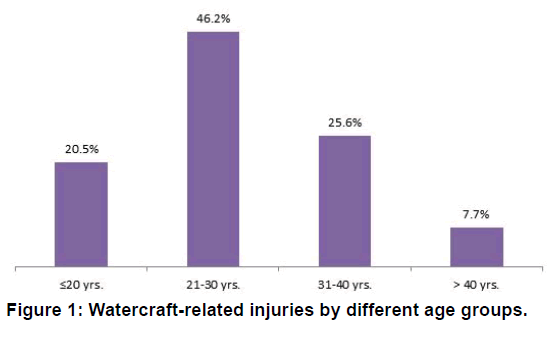
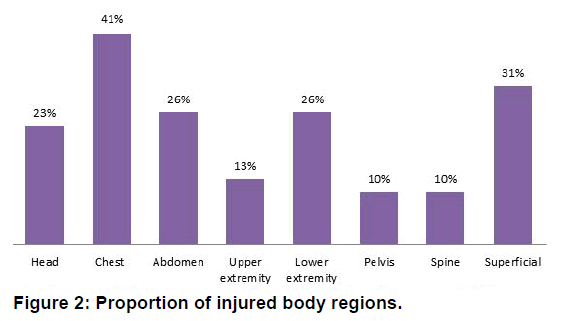
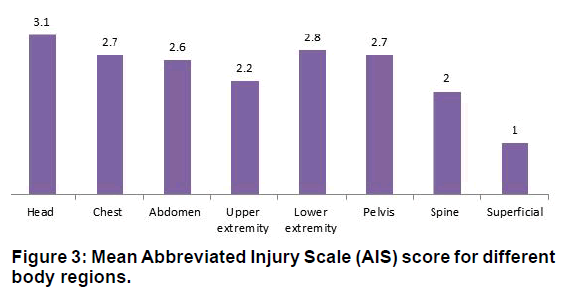
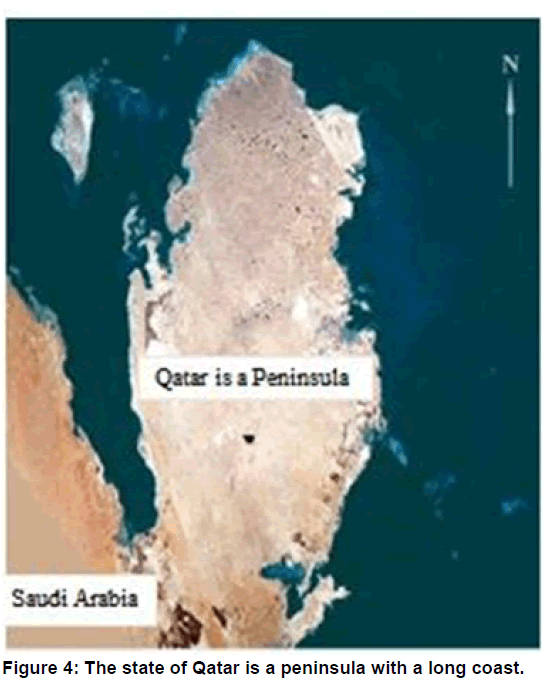
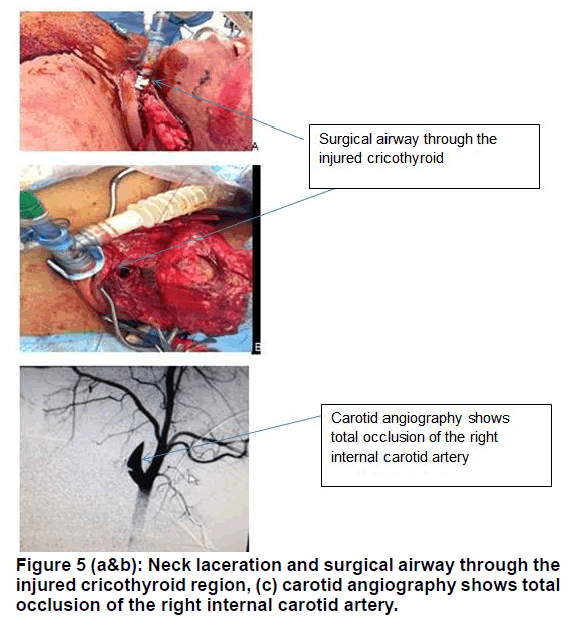



 The Annals of Medical and Health Sciences Research is a monthly multidisciplinary medical journal.
The Annals of Medical and Health Sciences Research is a monthly multidisciplinary medical journal.